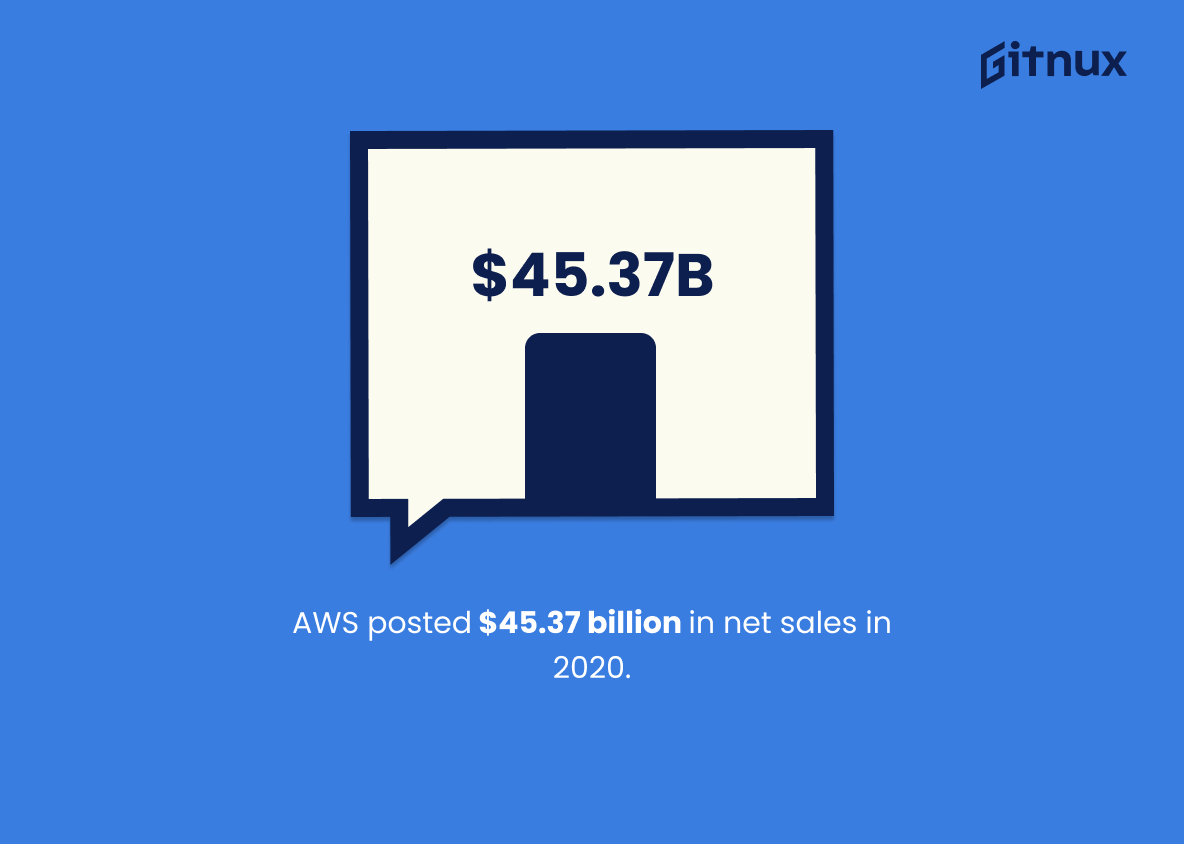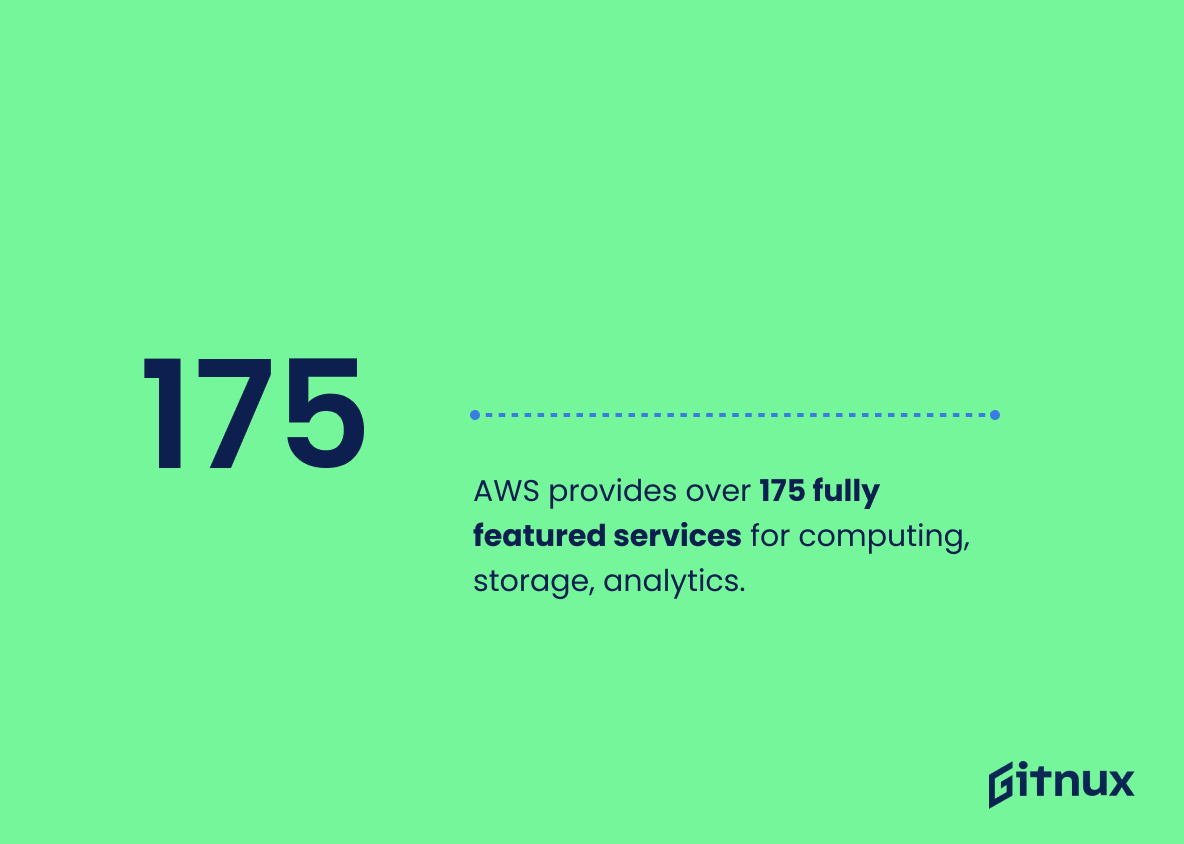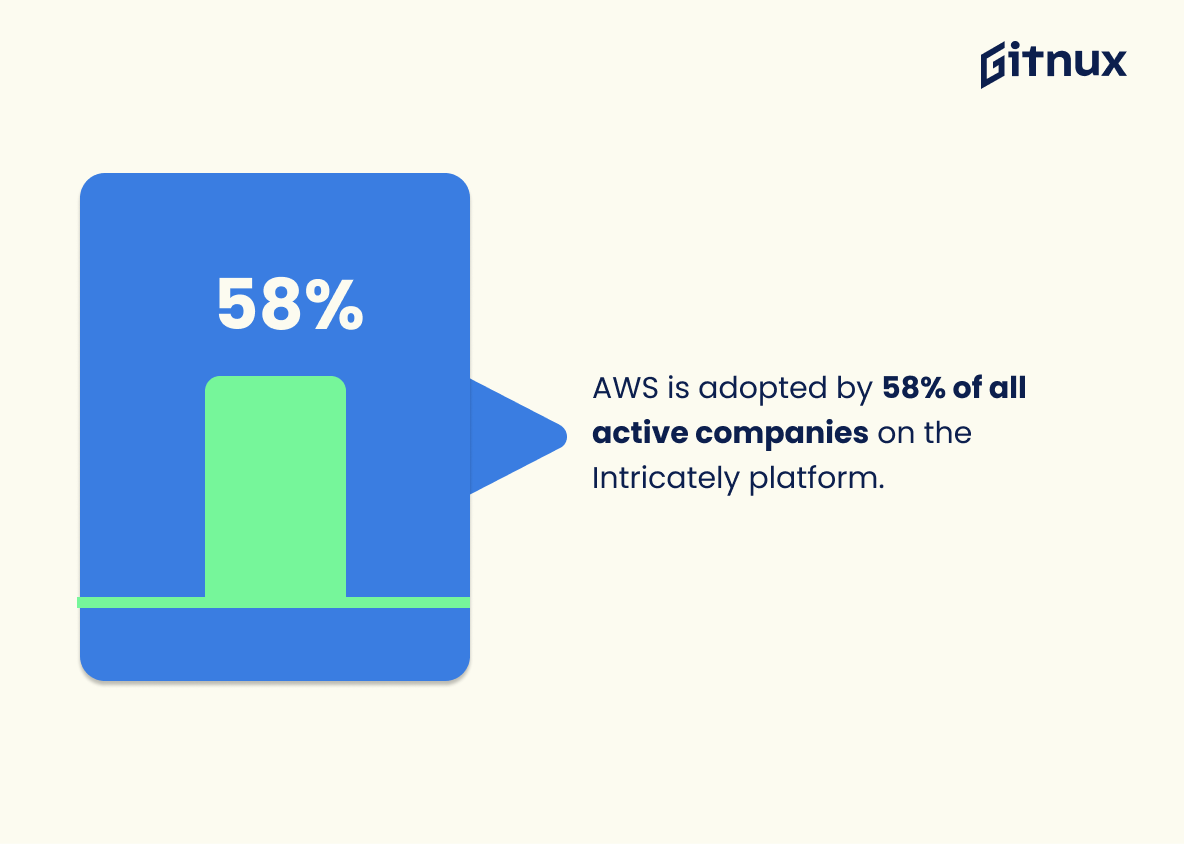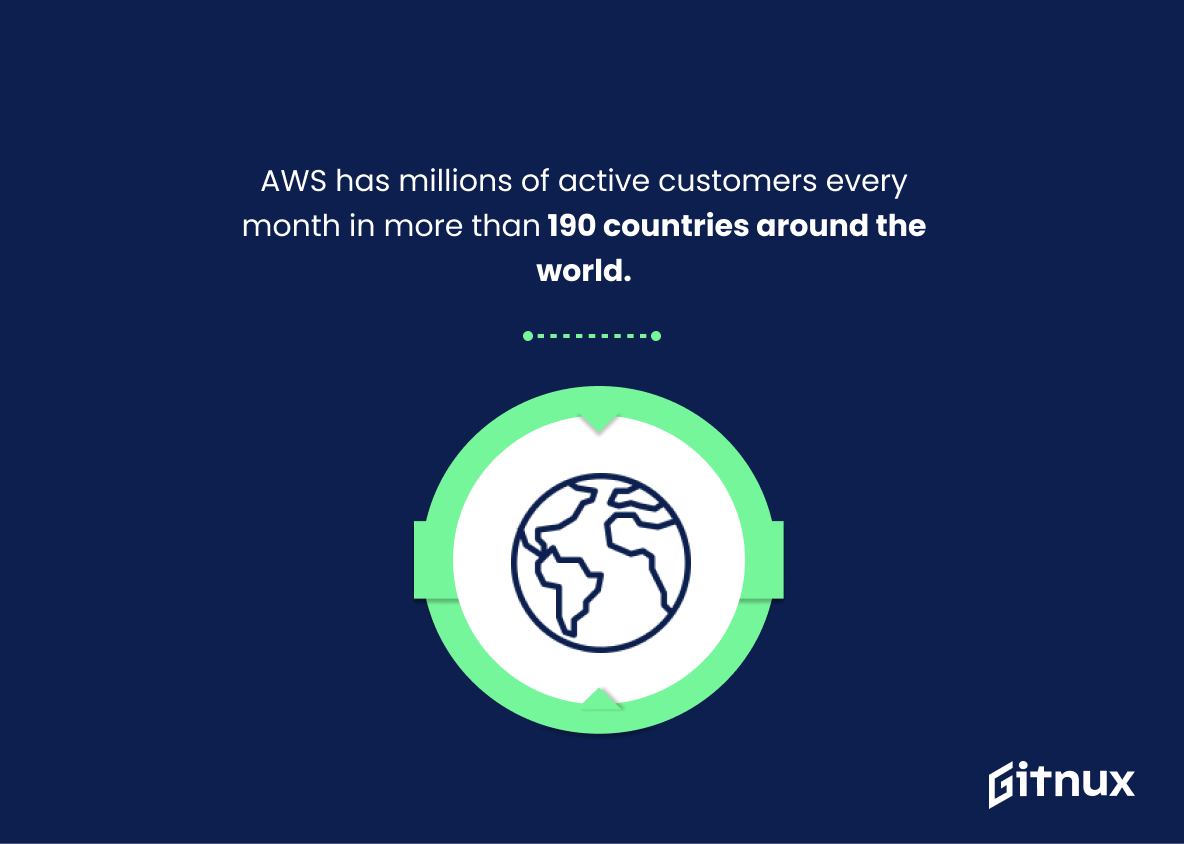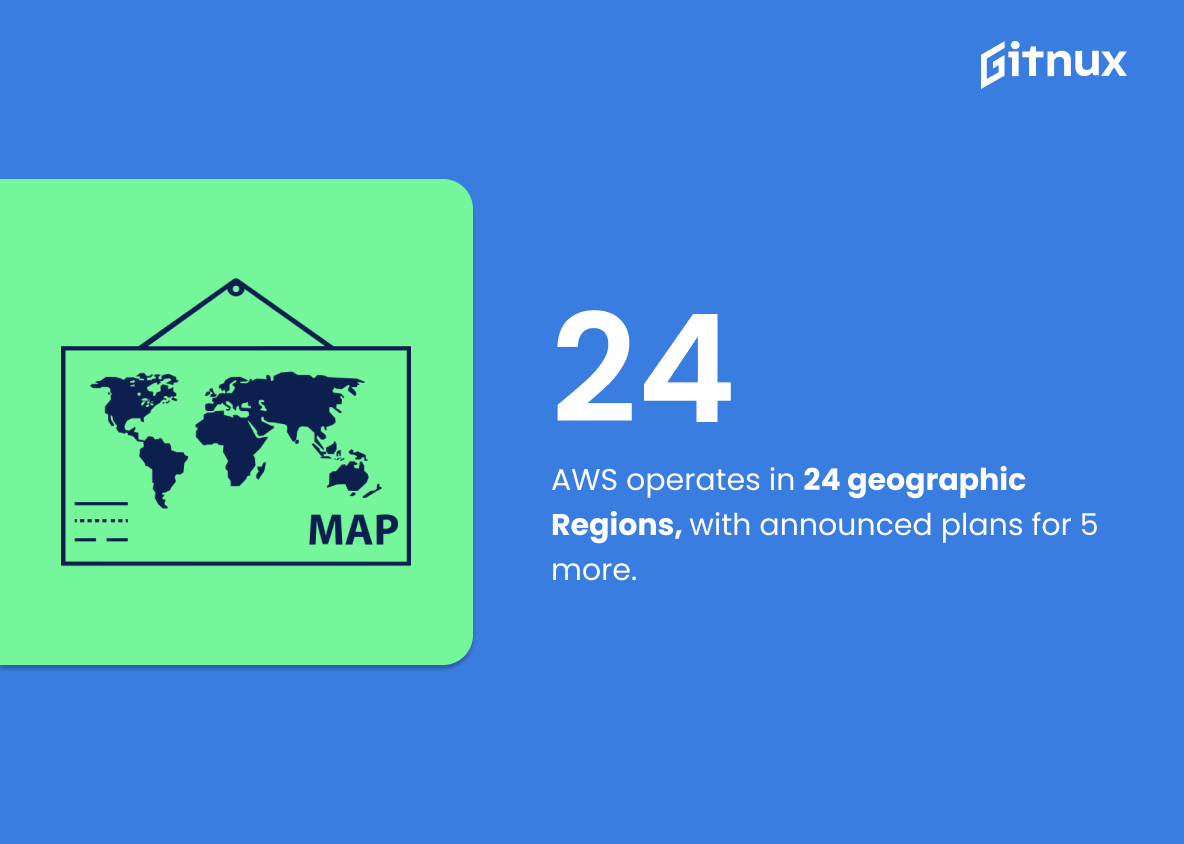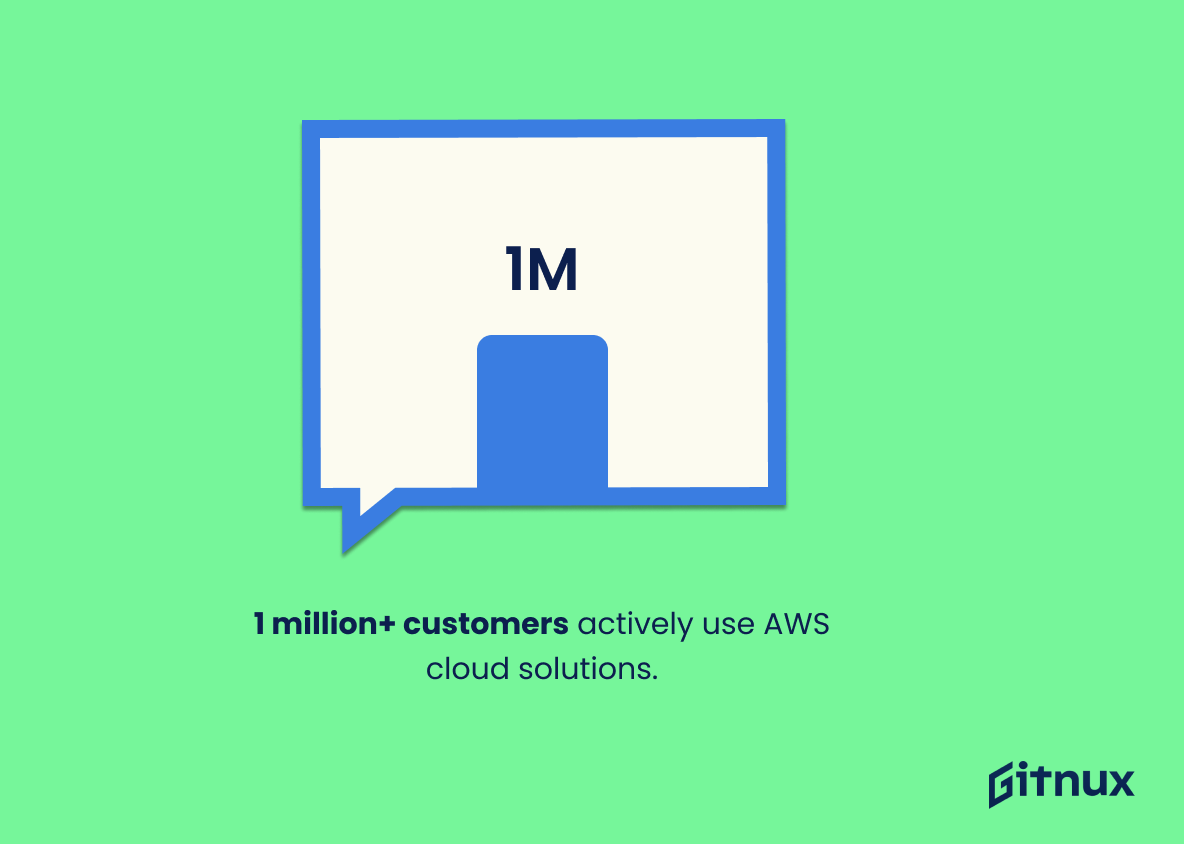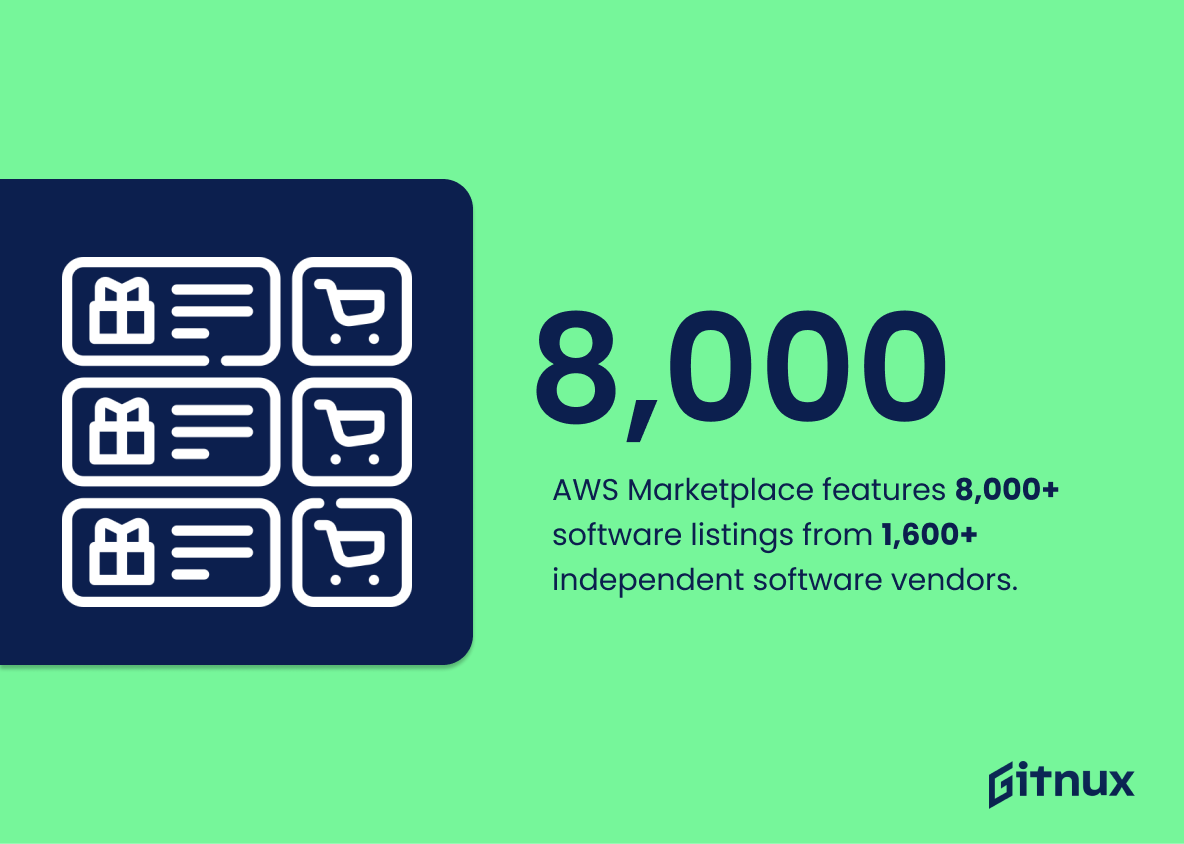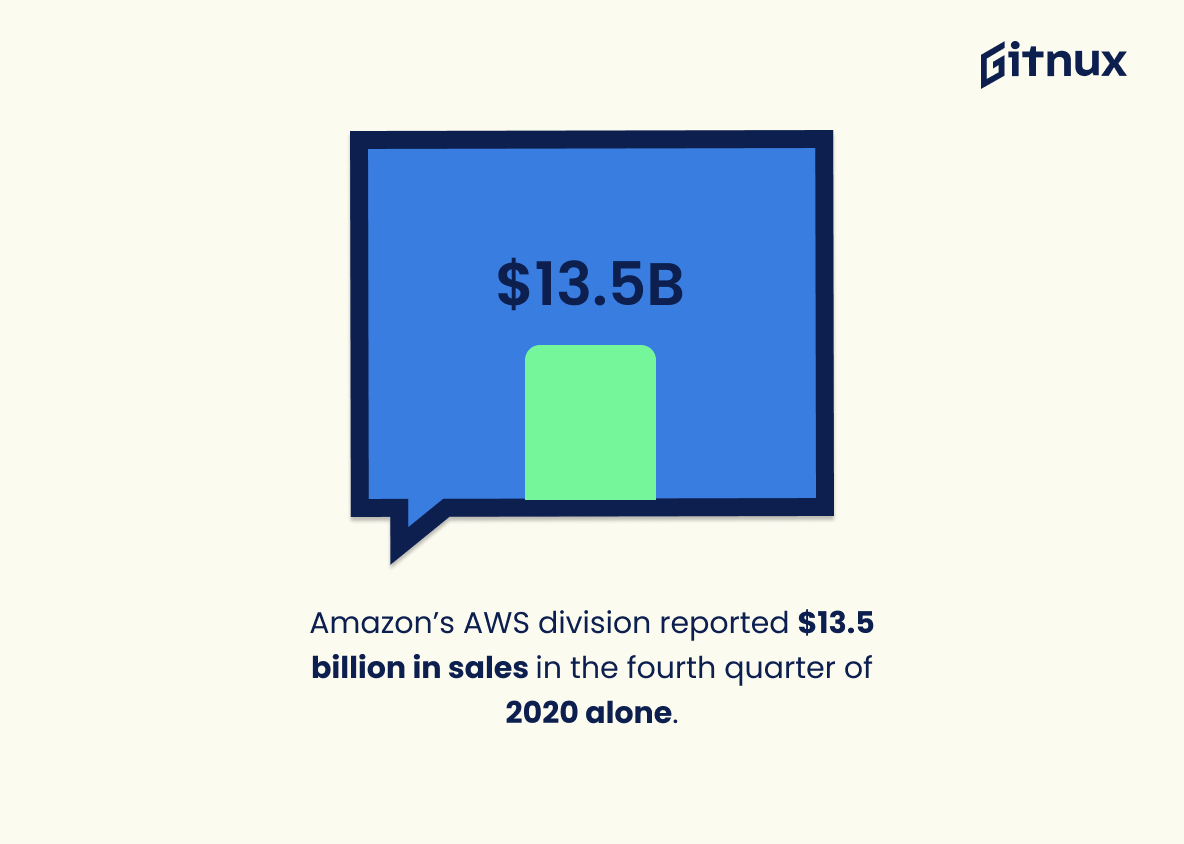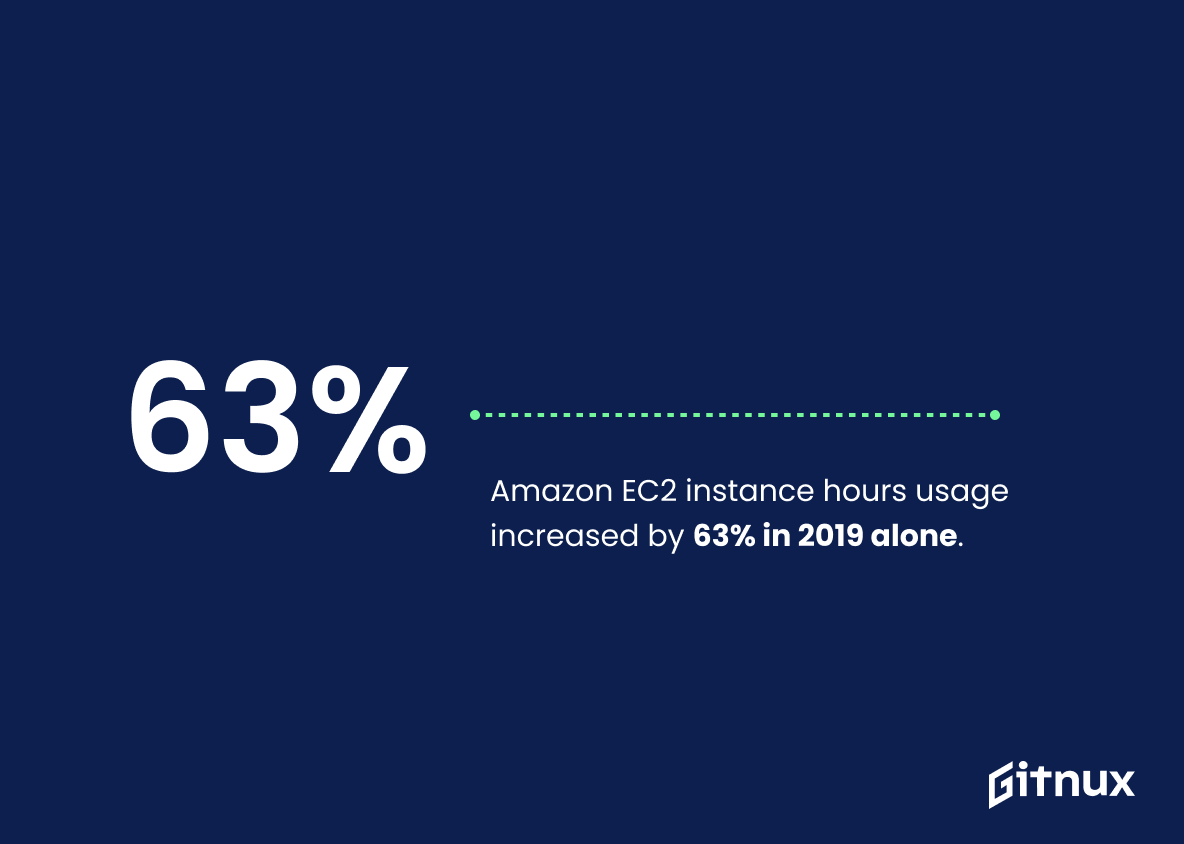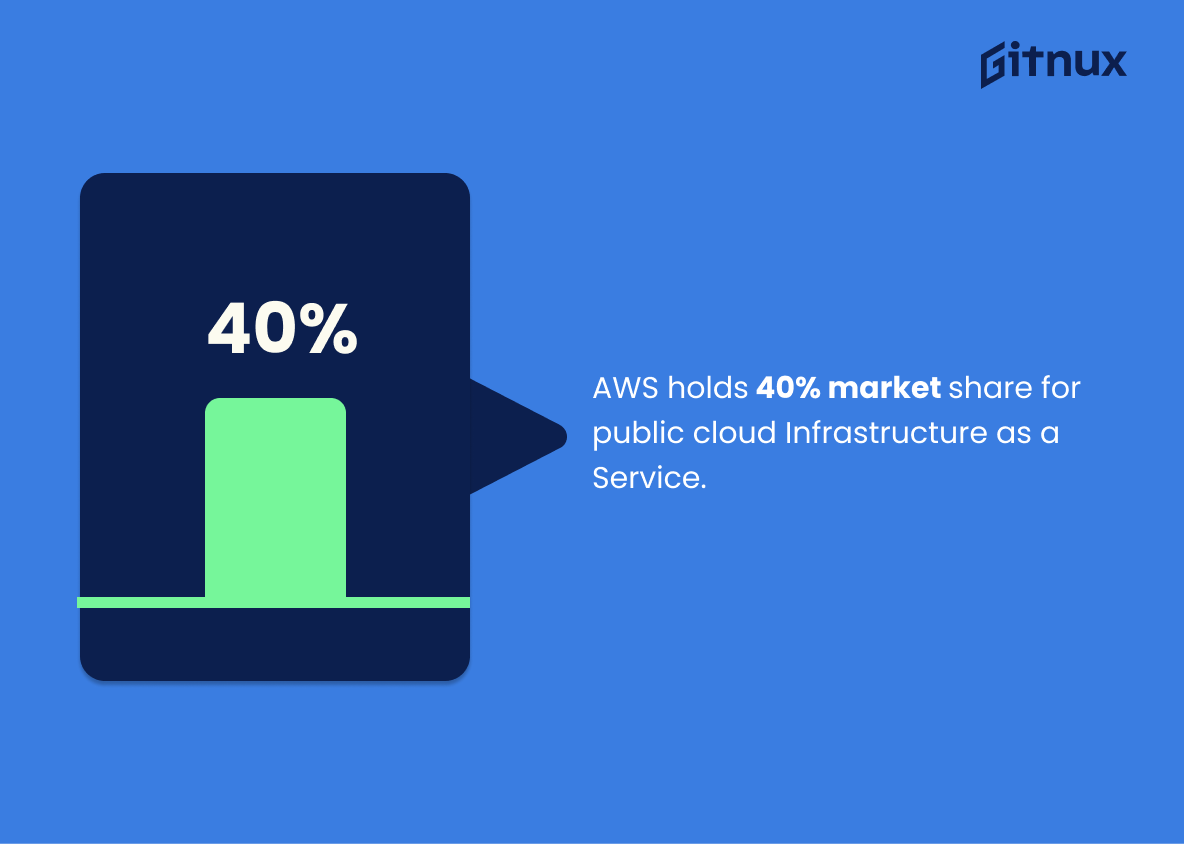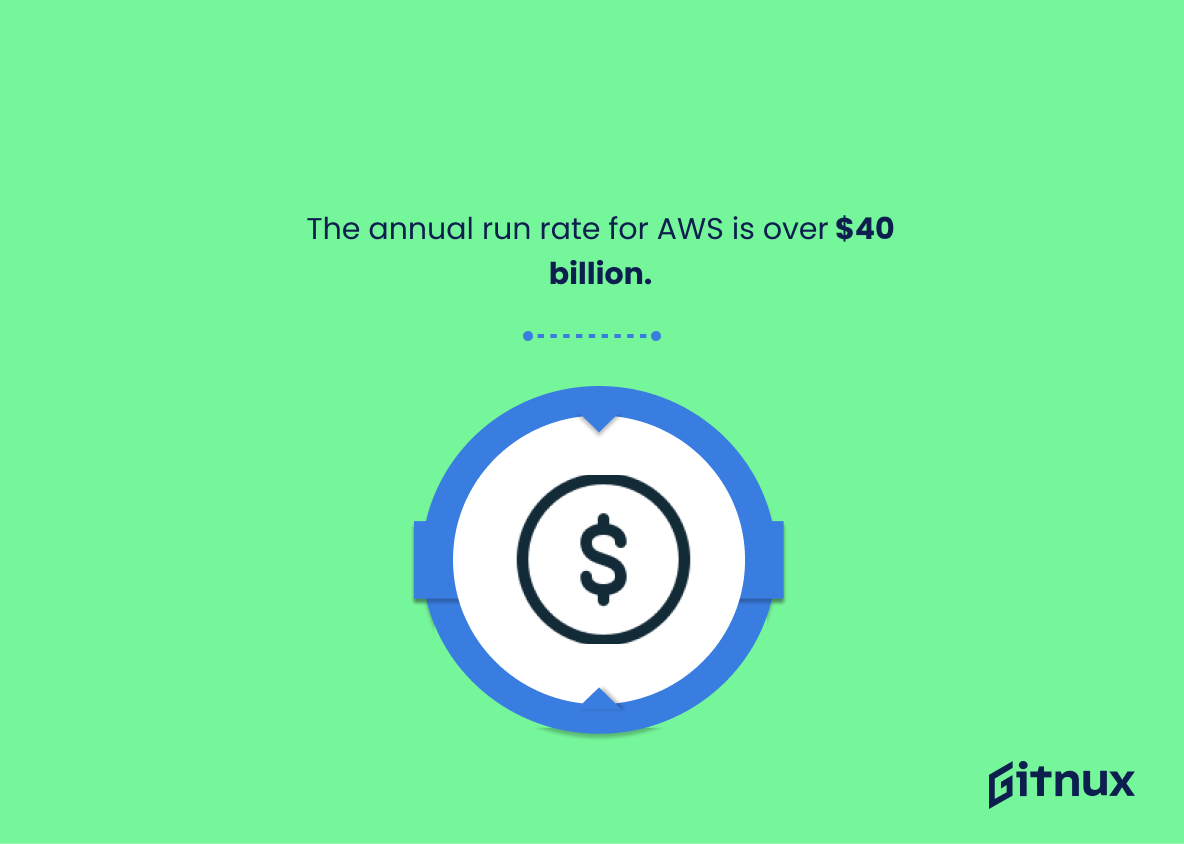Buckle up digital pioneers as we delve into the vast universe of AWS (Amazon Web Services), a global market leader in cloud computing platforms. This blog post is designed to satiate your curiosity about AWS industry statistics, providing insight into its growth trajectory, market share, and the role it plays in the current technological revolution.
Whether you’re a business professional, tech-enthusiast, or an industry analyst, these comprehensive statistics will help you understand the formidable presence of AWS in the global IT landscape. Tune in as we unravel the numbers and percentages that underscore AWS’s remarkable journey and its profound impact on businesses across the globe.
The Latest AWS Industry Statistics Unveiled
AWS holds approximately 32% market share of the cloud services industry.
Delving into the heart of the cloud services industry, an intriguing revelation surfaces – AWS commanding a riveting 32% of the market share. This dominance not only mirrors the trust and reliability that clients associate with AWS but also indicates its powerful market position within the industry.
This numeric embodiment of AWS’s clout has profound implications for anyone invested in the world of cloud computing, from stakeholders and decision makers, to developers and end consumers. Evaluating this figure allows one to appreciate the pulsating lifeforce of AWS in an industry that is as vast as it is competitive. With nearly a third of the market captivated by AWS, the figure paints a vivid picture of the brand’s capacity to deliver vigorous and value-added services to a broad clientele.
AWS posted $45.37 billion in net sales in 2020.
Plunging into the vast ocean of AWS industry facts, the eye-popping figure of $45.37 billion in net sales for 2020 truly stands as a towering lighthouse. This colossal revenue not only testifies to AWS’s indomitable position in the cloud industry, but also provides a lucid snapshot of its robust financial health.
Furthermore, it offers a tangible yardstick against which to measure AWS’s market dominance and financial performance. In the grand scheme of the global Cloud race, this statistic clearly underlines the prominent role played by AWS in shaping the industry currents and trends.
AWS provides over 175 fully featured services for computing, storage, analytics.
Delving into the essence of this statistic unveils AWS’s robust digital arsenal, boasting over 175 fully featured services for computing, storage, and analytics. This incredible diversity of functionalities portrays AWS as a formidable player in the industry, providing a plethora of solutions tailored to the ever-evolving needs of today’s tech-savvy businesses.
This multifaceted capacity highlights AWS’s commitment to empowering clients to streamline their operations, evidencing a constant push for innovation and efficiency in the world of cloud computing and beyond. This positions AWS not just as a provider, but as a game-changer, setting industry standards and defining trends. Hence, this integral statistic places AWS at the pedestal of the discourse on industry statistics, forming a greater understanding of AWS’s command within the marketplace.
AWS is adopted by 58% of all active companies on the Intricately platform.
Diving headfirst into the realm of AWS Industry Statistics, one can hardly overlook the striking revelation that a significant 58% of all active companies on the Intricately platform have adopted AWS. This not only implies a broad acceptance and faith in AWS’s capabilities but also underlines its dominance as a preferred digital infrastructure provider.
In the tapestry of industry statistics, this provides vivid insight into AWS’s market acceptability, underlying its powerful influence; a key point of discussion for any article dissecting industry dynamics in detail. This burning statistic quite clearly indicates the hovering influence of AWS, painting a picture of its stronghold in powering the digital operations of today’s businesses.
AWS has millions of active customers every month in more than 190 countries around the world.
The staggering figure that AWS serves millions of active customers monthly in over 190 countries acts as a vivid testament to its global dominance in the cloud computing industry. This statistic paints a robust picture of the usage, reach, and popularity of AWS. When delving into AWS Industry Statistics, this serves as a compelling byte underscoring AWS’s vast customer base.
Not only does it signify a noteworthy trust and reliance on this platform, but it also exemplifies the extensive geographical dispersion of AWS services, indicating the platform’s scalability and adaptability to diverse markets. This statistic, therefore, is a cornerstone to comprehend the magnitude and influence of AWS within the rapidly advancing cloud computing domain.
AWS operates in 24 geographic Regions, with announced plans for 5 more.
Painting a vivid image of AWS’s global influence, this statistic is akin to a heartbeat pulsating across 24 geographic regions. It not only underlines the expansive reach of Amazon Web Services, but also indicates its dynamic growth trajectory characterized by plans for 5 additional regions.
In the grand narrative of AWS Industry Statistics, it draws attention to the platform’s geographical omnipresence and its continuous pursuit of growth, indicating a relentless march towards global cloud dominance. Therefore, this statistic is a compass pointing to the vast influence and future ambitions of AWS, making it an integral piece in the jigsaw puzzle narrating AWS’s global role and its endeavors in shaping the web services landscape.
1 million+ customers actively use AWS cloud solutions.
Highlighting the colossal number of over a million active customers utilizing AWS cloud solutions offers a vivid testament to the robust presence and deep influence AWS has in the cloud computing industry. To put it another way – it’s like saying that AWS has become a grand ‘cloud metropolis’, bustling with over a million residents who actively harness its capabilities.
This not only establishes AWS as a dominant player but also presents it as a high-demand solution within the industry. Further, this immense user base paints a compelling picture of customer satisfaction and loyalty, underscoring the competence, reliability, and advanced capabilities of AWS as a trusted cloud solution provider. Such facts surely turn heads in the industry and are critical in shaping our perceptions about AWS’s success.
90% of public sector organizations use AWS.
In the digital tapestry of the public sector, a vibrant thread you cannot ignore is woven by AWS usage. The colossal figure of 90% of public sector organizations using AWS is not just a mere number. It’s a testimony to the trust and reliance these entities have placed on AWS and a vivid snapshot of the prevailing market trends. This prevalence indicates the domination of AWS in the public sector IT space, outlining its success in meeting the sector’s specialized needs for security, transparency, and efficiency.
As such, this figure acts as a compass, guiding the conversation about AWS Industry Statistics, and shapes our understanding by providing a concrete reference for comparison and growth analysis. Besides, it also underscores the market’s potential, revealing opportunities and challenges for both existing and would-be competitors in this vibrant digital ecosystem.
AWS Free Tier offers 750 hours of Amazon EC2 Linux t2.micro instance usage to new AWS customers each month for one year.
The sheer generosity of AWS’s Free Tier, presenting new customers with 750 hours per month for one year of Amazon EC2 Linux t2.micro instance usage, can be seen as a bold stratagem within the Industry. It underpins the company’s confidence in fostering customer loyalty through heavy initial free usage, allowing users to comprehensively test and experiment the platform’s capabilities before investing further.
Imagine it akin to a free long-term test drive of a luxury car – enticing customers with the feel, performance and potential of a superior product. This bold approach potentially contributes to AWS’s competitive edge, leading them to be a dominant player in the cloud industry.
AWS S3 service holds trillions of objects and regularly peaks at millions of requests per second.
In the vast universe of AWS, the sheer volume of trillion objects cradled in the AWS S3 service cannot be underestimated. The omnipotent allure of this statistic resides in its testimony to the industrial might and robust scaling abilities of AWS.
It is akin to a pulsating heart, regularly peaking at millions of requests per second, pumping lifeblood throughout the entirety of global online operations. This vivid portrayal of AWS’s enormity is key in understanding the company’s industry dominance, marking it as a critical point of interest in our discussion about AWS Industry Statistics.
AWS Marketplace features 8,000+ software listings from 1,600+ independent software vendors.
Unveiling the magnitude of AWS Marketplace, it’s noteworthy to spotlight that it boasts more than 8,000 software listings from over 1,600 independent software vendors. This dynamic ecosystem seizes the essence of just how expansive AWS is, dominating a large segment of the cloud industry.
Such a hoard of listed programs and vendors demonstrates AWS’s virulent attraction for software companies, indicating a fertile ground for variety and innovation. As such, within the constellation of AWS Industry Stats, these figures play a pivotal role, underlining the vast opportunities for businesses and users alike shaped by AWS’s broad capacity and extensive diversity.
Amazon’s AWS division reported $13.5 billion in sales in the fourth quarter of 2020 alone.
Peering into the colossal figure of $13.5 billion in sales that Amazon’s AWS division pulled in during the fourth quarter of 2020 alone, provides a potent illustration of the immense market clout that AWS commands. This noteworthy metric anchors the narrative of AWS’s industry dominance, powering the dialogue about the substantial revenues generated by cloud services.
It’s like a spotlight thrown into the vast landscape of cloud computing, highlighting the potential for robust economic growth. Fundamentally, it serves as a testament to AWS’s prominent role in shaping the cloud industry, setting strong precedence for the discussion of industry statistics in a blog post.
AWS training and certification for cloud skills helps 500,000+ people upgrade their skills annually.
Diving deep into the essence of this statistic, it unveils the encompassing influence and reach of AWS training and certification. Annual empowerment of 500,000+ individuals signals AWS’s dynamism in both professional development and building cloud proficiency. In the realm of AWS industry statistics, this figure underscores the thriving importance of AWS as a potent driving force in shaping global cloud competency levels.
Importantly, this continuous up-skilling through certification mirrors the industry’s rapid evolution and AWS’s commitment to fueling that forward momentum. In essence, it paints a picture of the dynamic, large-scale impact AWS is having on the future of the tech sector.
Amazon EC2 instance hours usage increased by 63% in 2019 alone.
Intriguingly, the impressive 63% spike in Amazon EC2 instance hours usage during 2019 unearths a compelling narrative around the accelerating reliance on AWS in the IT industry. It underscores a burgeoning trend of companies shifting their digital workloads onto cloud-based platforms, equally testifying to AWS’s ascendency as a leading-edge solution. The stat essentially brings attention to AWS’s robust capabilities in handling high-volume traffic and diverse workloads, thereby propelling it as the linchpin in driving digital transformation across industries.
AWS holds 40% market share for public cloud Infrastructure as a Service.
Anchoring AWS in the commanding position of the public cloud Infrastructure as a Service landscape, the giant’s formidable 40% market share can’t be ignored. This figure not only attests to AWS’s dominance and staying power, but is also a testament to the immense trust and confidence that businesses across the globe place in its services.
In a fluctuating technological climate, this gives AWS a competitive edge and reinforces its status as the preferred pick for a robust majority. In the context of a blog about AWS industry statistics, this number highlights the company’s leadership and the significant influence it wields in shaping the future trajectory of the cloud industry.
The annual run rate for AWS is over $40 billion.
Examining the behemoth sum of $40 billion as the annual run rate for AWS is akin to gazing upon a towering skyscraper. It serves as a stark testament to AWS’s substantial financial prowess within the cloud computing industry. In a blog post articulating AWS industry statistics, this figure isn’t merely a dry number but a pulse check, signaling AWS’s healthy fiscal state and potentially influencing market trends. Reflecting acceleration of digital transformation across all industries, this number represents the trust multitude businesses invest in AWS for their digital infrastructure needs.
Direct Connect locations for AWS have grown to 119 in 2019 from just 11 in 2012.
The meteoric rise in Direct Connect locations for AWS, soaring from a mere 11 in 2012 to an impressive 119 in 2019, underpins a significant narrative about the expanding accessibility and reach of AWS across the globe.
This impressive tenfold expansion punctuates AWS’s commitment to lowering network costs, increasing bandwidth throughput, and providing a more consistent network experience, thereby solidifying its role as a leader in the tech industry. A testament to AWS’s robust growth and dynamic evolution, this statistic offers a compelling lens through which to view the company’s thriving ecosystem and influence in the industry at large.
By 2023, 90% of enterprises worldwide will be using cloud services like AWS.
Highlighting the forecast that by 2023, 90% of enterprises worldwide will be utilizing cloud services such as AWS serves as a powerful testament to the incredible revolution cloud technologies are ushering in the business world. In the panorama of AWS industry statistics, this projection not only foreshadows an immense expansion in the user base but also hints at the magnitude of trust businesses are placing in AWS and similar services.
This underlying emphasis on the growing dependence on cloud technologies manifests itself as an important discussion point for readers keen on understanding the trends and directions of the cloud industry. Essentially, it weaves a narrative of technological adoption and adaptation that is crucial for a well-rounded understanding of AWS industry statistics.
AWS launched in 2006 with just three services, now it has over 175+ services.
Ever since its inception in 2006, AWS has made a trailblazing journey, beginning a mere trio of services to now offering a staggering list of 175+ services. This is not just a number, but a chronicle of relentless innovation, expansion and customer trust in the ever-evolving digital landscape. From a statistics perspective, this exponential growth underscores AWS’s dominance and robust market presence in the cloud services industry.
The data paints a vivid picture of how AWS has been continuously diversifying and augmenting its portfolio to cater to the myriad needs of different businesses globally, a crucial point of interest in an analysis of the AWS industry.
On average, AWS adds 1,000 new functions and features annually.
“Dancing on the pulse of innovation, AWS annually integrates an impressive average of 1,000 new features and functions. This rhythmic stride of advancement truly exemplifies the scale of AWS’s dedication to advancement and constant evolution. Within the tapestry of AWS Industry statistics, this particular thread weaves a vivid picture of a tech giant relentless in pushing boundaries, enhancing customer experience, and creating greater operational efficiencies.
Every new feature and function is a fresh opportunity for users to enhance their business operations, sharpen their competitive edge, and to dream up new possibilities in the cloud computing landscape.”
Conclusion
In a world increasingly reliant on digital platforms, Amazon Web Services (AWS) has carved out a dominant presence in the cloud industry. The AWS industry statistics we’ve highlighted demonstrate its substantial growth, profitability, and widespread adoption across numerous sectors. As we see more businesses switching to cloud-based solutions for their operational needs, it’s clear that AWS will continue to set the pace.
Whether you’re a startup aiming for cost-efficient scalability or a global enterprise seeking powerful, flexible solutions, AWS could well be the backbone of your digital innovations. Staying updated with AWS trends and insights is essential as they provide valuable foresights that can give any organization a competitive edge.
References
0. – https://www.www.infoworld.com
1. – https://www.www.gartner.com
2. – https://www.aws.amazon.com
3. – https://www.www.cnbc.com
4. – https://www.acloudguru.com
5. – https://www.www.statista.com
6. – https://www.www.canalys.com
7. – https://www.www.aboutamazon.com
8. – https://www.www.zdnet.com
9. – https://www.www.intricately.com

